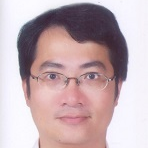Resonant Converter in Power Electronics Technology
A special issue of Applied Sciences (ISSN 2076-3417). This special issue belongs to the section "Energy Science and Technology".
Deadline for manuscript submissions: closed (31 October 2021) | Viewed by 30217
Special Issue Editors
Interests: power electronics; resonant converters; high-efficiency power converters; renewable energy conversion; electric vehicle applications; soft switching techniques; ZVS PWM converters; bidirectional power converters; high-efficiency battery chargers
Special Issues, Collections and Topics in MDPI journals
Special Issue Information
Dear Colleagues,
We are inviting submissions of original research to a Special Issue of Applied Science on the subject of “Resonant Converters in Power Electronics Technology”.
In recent years, resonant converters have played an important role in power electronics technology for different applications such as plug-in electric vehicles, electric vehicles, renewable energy systems, bidirectional power flows for battery chargers, high-efficiency power supplies, and industry applications. Resonant converters in power electronics are becoming essential for commercial and industrial power units in various ways. This Special Issue focuses on the development of novel resonant converter topologies in power electronics.
Topics of interest for this Special Issue include but are not limited to the following:
- New trends and technologies for resonant converters;
- Multilevel resonant converter topologies;
- Energy-storage technologies;
- Renewable energy conversion;
- The integration of renewable energy technologies into the grid;
- Reviews of resonant converter technologies;
- Resonant converters for electric vehicle applications;
- Resonant converters for switching mode power supplies;
- Resonant converters for industrial applications;
- Modulation techniques for advanced resonant converters.
Prof. Dr. Bor-Ren Lin
Prof. Dr. Chien-Ming Wang
Guest Editors
Manuscript Submission Information
Manuscripts should be submitted online at www.mdpi.com by registering and logging in to this website. Once you are registered, click here to go to the submission form. Manuscripts can be submitted until the deadline. All submissions that pass pre-check are peer-reviewed. Accepted papers will be published continuously in the journal (as soon as accepted) and will be listed together on the special issue website. Research articles, review articles as well as short communications are invited. For planned papers, a title and short abstract (about 100 words) can be sent to the Editorial Office for announcement on this website.
Submitted manuscripts should not have been published previously, nor be under consideration for publication elsewhere (except conference proceedings papers). All manuscripts are thoroughly refereed through a single-blind peer-review process. A guide for authors and other relevant information for submission of manuscripts is available on the Instructions for Authors page. Applied Sciences is an international peer-reviewed open access semimonthly journal published by MDPI.
Please visit the Instructions for Authors page before submitting a manuscript. The Article Processing Charge (APC) for publication in this open access journal is 2400 CHF (Swiss Francs). Submitted papers should be well formatted and use good English. Authors may use MDPI's English editing service prior to publication or during author revisions.
Keywords
- Three-level resonant converters
- Bidirectional DC–DC converters
- Battery chargers
- Plug-in electric vehicle
- Switching mode power supplies
- Power converters in wireless power transfer techniques
- Renewable energy conversion






